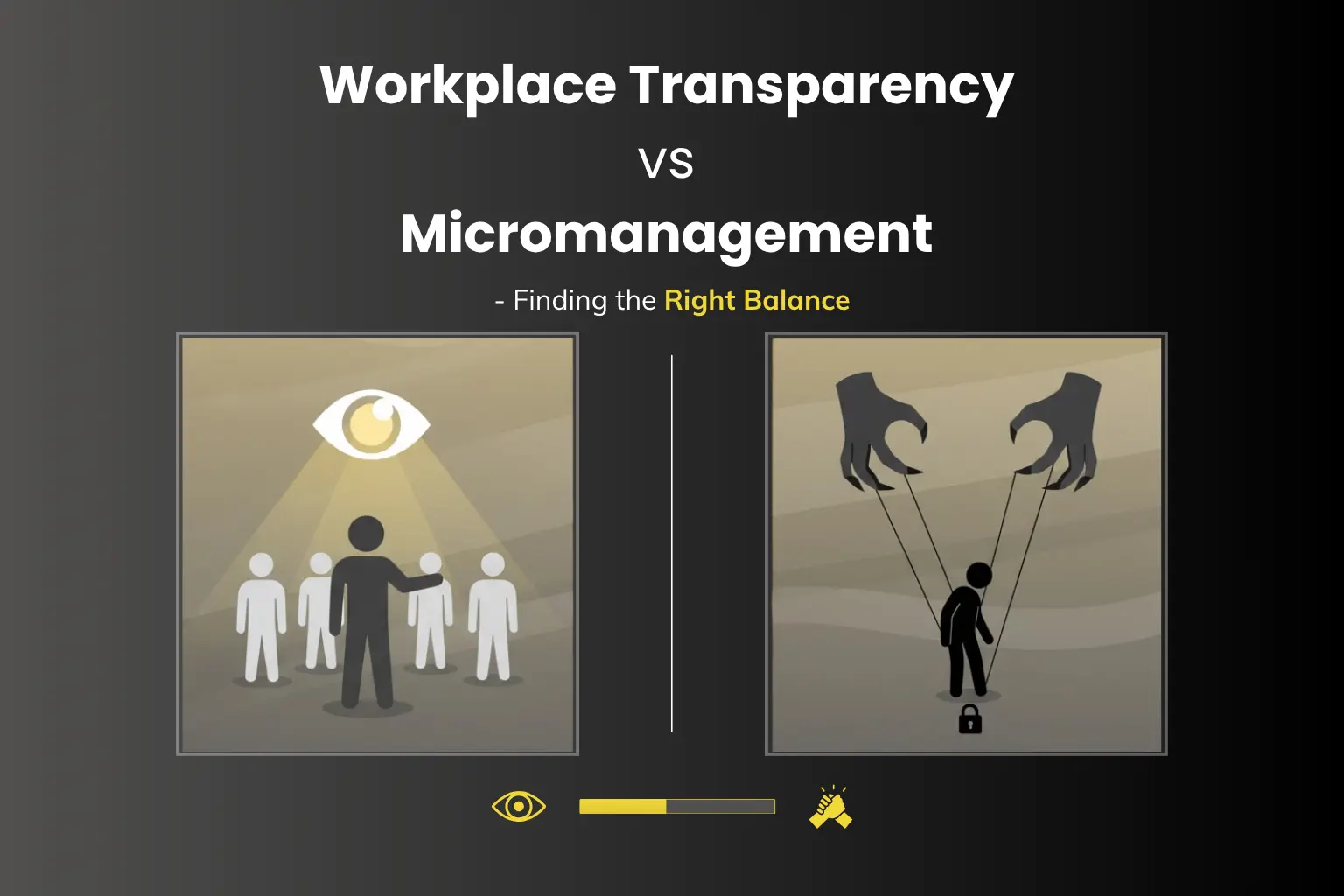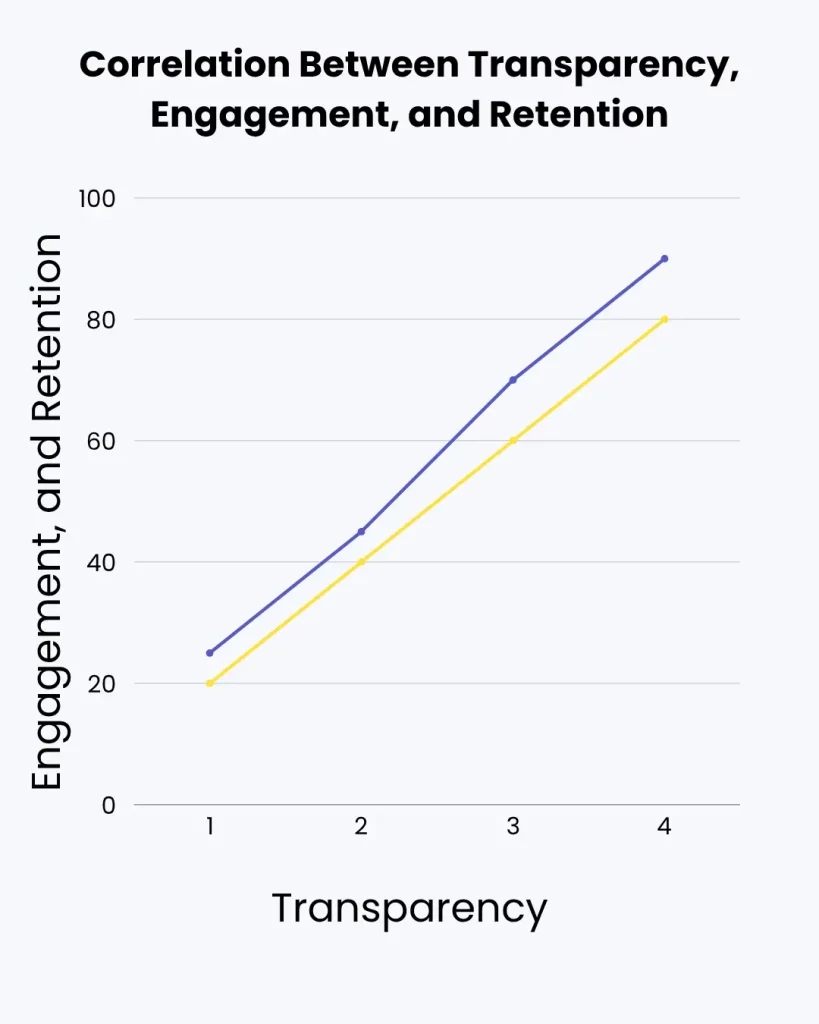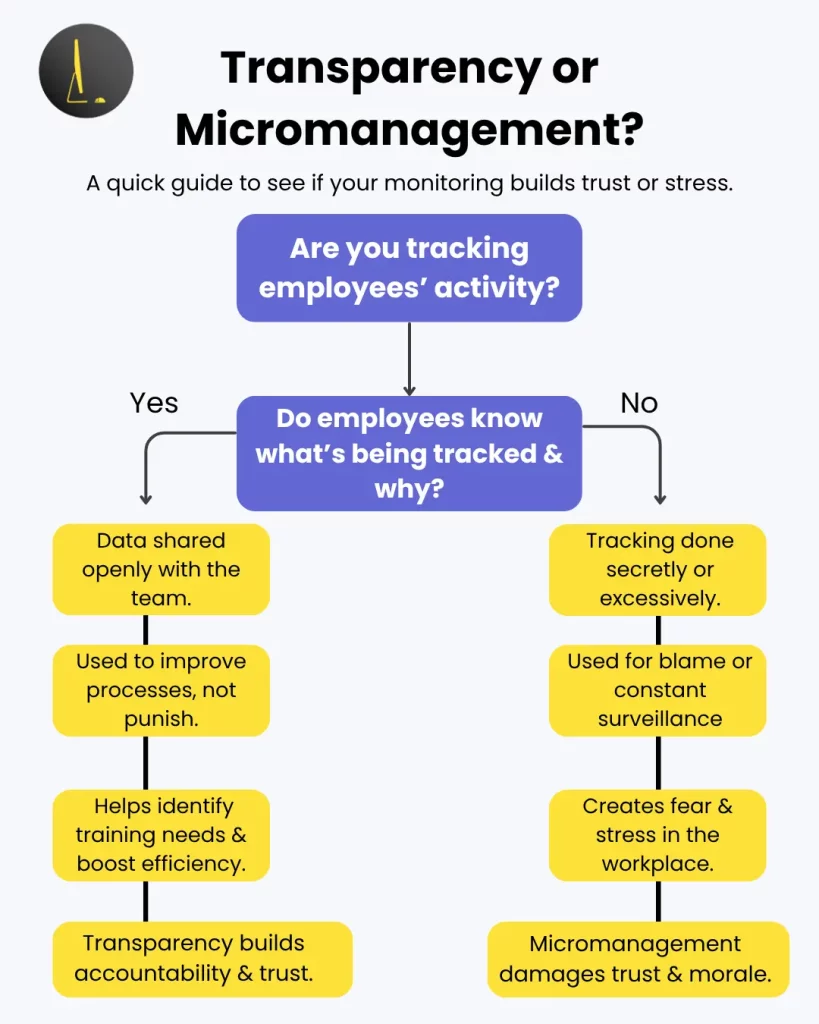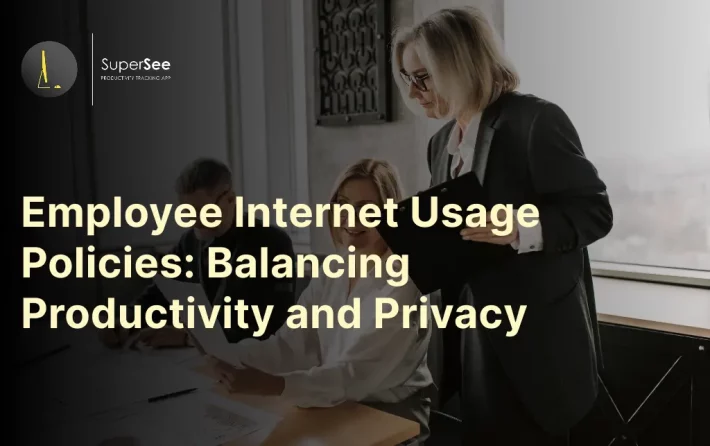Workplace Transparency vs Micromanagement: How to Find the Right Balance
Discover how leaders can build trust without over-controlling. Learn actionable strategies to balance transparency and micromanagement for happier, more productive teams.
Ever felt torn between trusting your team and checking in “just to be sure”?
As a leader, transparency empowers your employees, but taken too far, it can tip into micromanagement,stifling creativity, engagement, and trust.
The key lies in balance: seeing the bigger picture while respecting your team’s autonomy. Transparency builds clarity, accountability, and psychological safety, while micromanagement creates stress, disengagement, and high turnover.
In this guide, we’ll explore how leaders can embrace empathy-based management, provide visibility without intrusion, and foster a culture of trust, all while using actionable strategies to ensure your team thrives.

1. The Fine Line Between Transparency and Micromanagement
Transparency and micromanagement often look similar, both involve oversight and visibility, but the intent and impact make all the difference.
Transparency Builds Empowerment
- Sets clear expectations and open communication.
- Provides access to information for alignment and trust.
- Empowers employees to make informed decisions.
Micromanagement Creates Resistance
- Focuses on controlling every detail, signaling distrust.
- Reduces confidence and limits innovation.
When Visibility Becomes Surveillance
Constantly asking for updates or tracking every click can feel invasive. Employees may comply but lose initiative and morale.
🔗 Employee Monitoring Laws 2025: Compliance & Productivity with SuperSee

2. Why Transparency Builds Trust
Transparency isn’t just a buzzword, it’s a strategic leadership tool that strengthens connection and engagement.
Honest Communication
Frequent, open updates reduce ambiguity and create psychological safety. Employees who understand the “why” behind decisions are more motivated.
Empathy Bridges the Gap
Empathetic leaders recognize workloads, strengths, and challenges, cultivating loyalty and trust.
Impact on Productivity
Teams with transparent leadership report:
✅ Higher engagement
✅ Faster collaboration
✅ Lower turnover According to Gallup, organizations that emphasize trust see up to 50% lower attrition.

3. How Micromanagement Kills Productivity
Micromanagement often stems from good intentions, but its psychological cost is steep.
The Emotional Toll
Constant oversight creates stress, leading to burnout and low morale. Employees hesitate to take initiative, fearing mistakes.
It Signals Distrust
Over-supervision makes teams feel undervalued and untrusted, damaging loyalty.
Signs You Might Be Micromanaging
- You require constant progress updates.
- You correct minor, low-impact tasks.
- You struggle to delegate responsibilities.
🔗 Harvard Business Review – The Cost of Micromanagement

4. Finding the Right Balance
Achieving balance between transparency and autonomy requires intentional leadership and the right tools.
From Monitoring to Mentoring
- Focus on outcomes, not activity.
- Schedule weekly check-ins, not daily intrusions.
- Encourage self-management and trust within teams.
Tools That Enable Ethical Transparency
Use solutions like SuperSee to maintain visibility without invading privacy.
- Track productivity and attendance ethically.
- Share dashboards so employees can view their own metrics.
Implement goal-based monitoring instead of constant oversight.
🔗 Ecom Skippers Case Study – Balancing Transparency with SuperSee

5. How Empathy Shapes Modern Leadership
Empathy transforms management from directive to collaborative.
Leaders who lead with empathy:
- Foster loyalty and emotional safety
- Drive stronger team performance
- Reduce communication friction
Tip: Lead with questions, listen actively, and guide, don’t dictate. Your team will feel supported, not watched.

Frequently Asked Questions (FAQs)
Transparency promotes clarity and trust by sharing information and setting expectations. Micromanagement involves over-control, reducing employee autonomy and creativity.
Set measurable goals, use ethical monitoring tools like SuperSee, and share only necessary insights to ensure fairness and respect.
Teams that trust their leaders demonstrate higher engagement, better collaboration, and lower turnover because they feel valued and empowered.
Platforms like SuperSee help track productivity, app usage, and time analytics transparently, ensuring compliance with GDPR and DPDP standards.
Conclusion
Transparency empowers. Micromanagement controls.
The difference lies in intent, empathy, and execution.
By leading with understanding and using tools that respect privacy, leaders can:
✅ Build lasting trust
✅ Improve engagement
✅ Retain top talent
Your team performs best when they feel seen, not watched.
Start your free 14-day trial with SuperSee to ethically monitor, support, and empower your workforce.
Trust your team, guide with empathy, and lead with transparency.
Harvard Business Review — ‘The Neuroscience of Trust,’ Paul J. Zak, 2017



